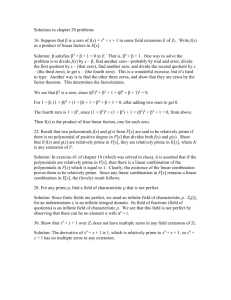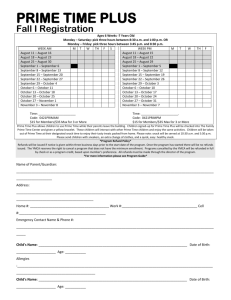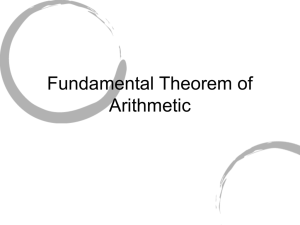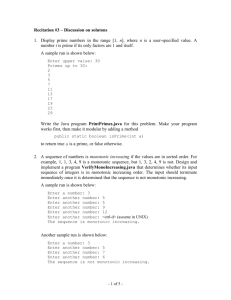Optimus Prime
advertisement
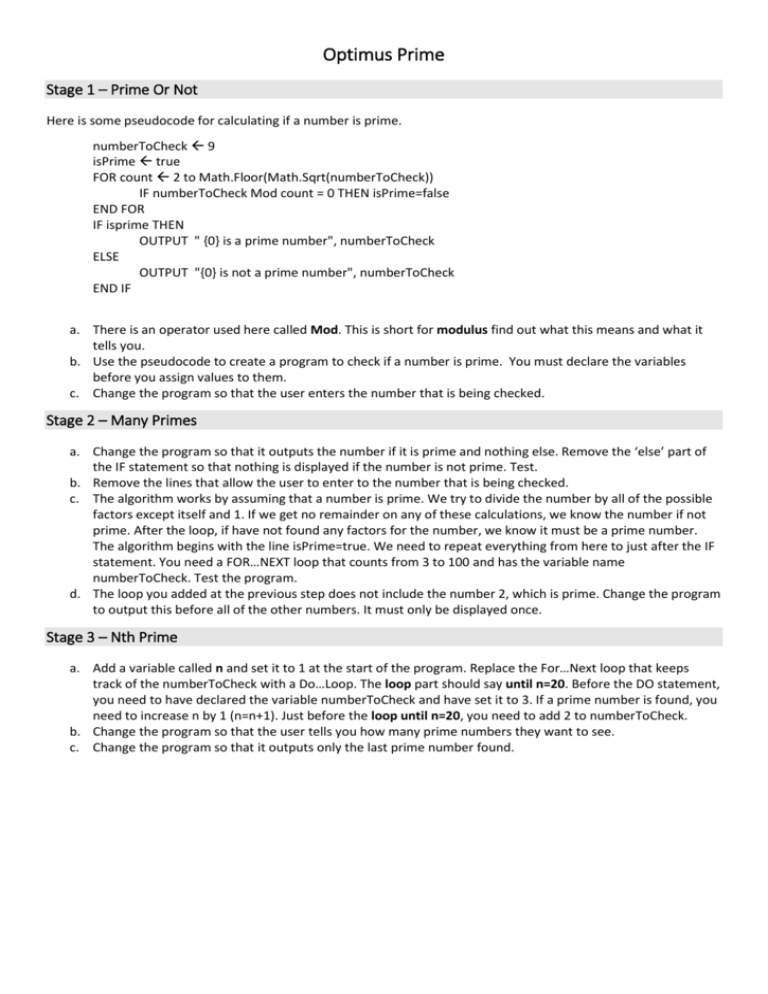
Optimus Prime
Stage 1 – Prime Or Not
Here is some pseudocode for calculating if a number is prime.
numberToCheck 9
isPrime true
FOR count 2 to Math.Floor(Math.Sqrt(numberToCheck))
IF numberToCheck Mod count = 0 THEN isPrime=false
END FOR
IF isprime THEN
OUTPUT " {0} is a prime number", numberToCheck
ELSE
OUTPUT "{0} is not a prime number", numberToCheck
END IF
a. There is an operator used here called Mod. This is short for modulus find out what this means and what it
tells you.
b. Use the pseudocode to create a program to check if a number is prime. You must declare the variables
before you assign values to them.
c. Change the program so that the user enters the number that is being checked.
Stage 2 – Many Primes
a. Change the program so that it outputs the number if it is prime and nothing else. Remove the ‘else’ part of
the IF statement so that nothing is displayed if the number is not prime. Test.
b. Remove the lines that allow the user to enter to the number that is being checked.
c. The algorithm works by assuming that a number is prime. We try to divide the number by all of the possible
factors except itself and 1. If we get no remainder on any of these calculations, we know the number if not
prime. After the loop, if have not found any factors for the number, we know it must be a prime number.
The algorithm begins with the line isPrime=true. We need to repeat everything from here to just after the IF
statement. You need a FOR…NEXT loop that counts from 3 to 100 and has the variable name
numberToCheck. Test the program.
d. The loop you added at the previous step does not include the number 2, which is prime. Change the program
to output this before all of the other numbers. It must only be displayed once.
Stage 3 – Nth Prime
a. Add a variable called n and set it to 1 at the start of the program. Replace the For…Next loop that keeps
track of the numberToCheck with a Do…Loop. The loop part should say until n=20. Before the DO statement,
you need to have declared the variable numberToCheck and have set it to 3. If a prime number is found, you
need to increase n by 1 (n=n+1). Just before the loop until n=20, you need to add 2 to numberToCheck.
b. Change the program so that the user tells you how many prime numbers they want to see.
c. Change the program so that it outputs only the last prime number found.



